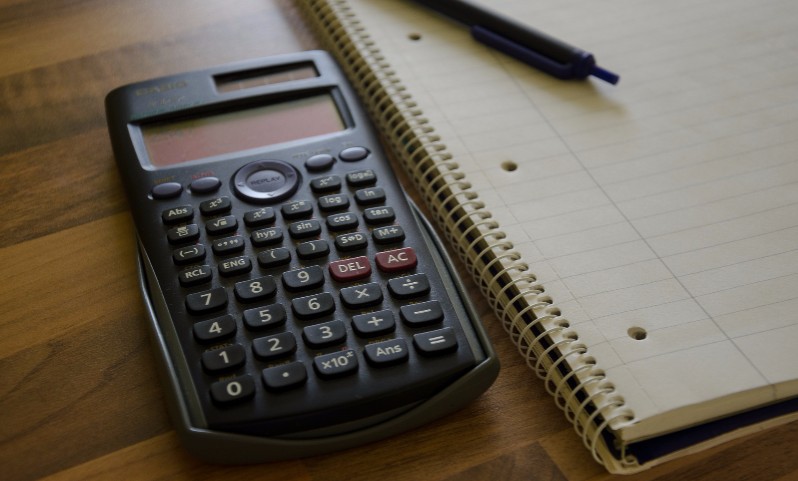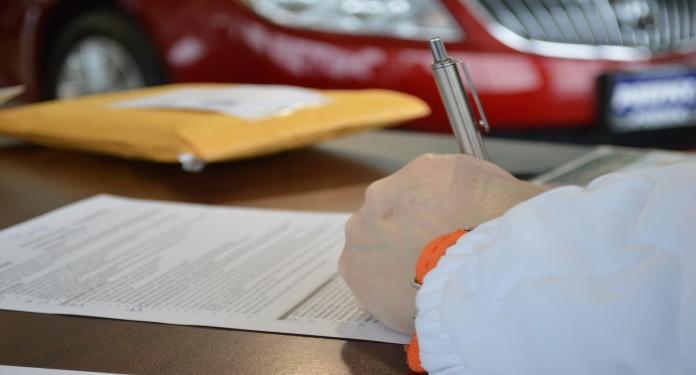Options for Solar Power Loans: From FHA to Home Equity

Interested in solar power loans, but not sure exactly how to go about it?
Let’s say you’re going solar and decided a solar loan makes the most sense for you. Now all that’s left is to figure out exactly how, and from whom, you can get your solar loan. With some much information online and so many solar companies all touting their own services, it can be pretty difficult to sift through everything.
Fear not! We’ve done the heavy lifting for you, with all the answers below.
Why Get a Solar Loan?
Before we move forward, let’s quickly hit the basics: A solar power loan is simply money you borrow to buy a solar system outright. Why go the loan option? Simple: you don’t pay anything up-front, but still get the juicy financial benefits of ownership, including the 30% federal tax credit, state incentives, and ownership of a cash-generating asset.
What are the downsides to solar loans? Like all loans, the longer you take to pay them off, the more interest you pay. You’ll never see as high of a return on your investment as a cash purchase, but you’re certainly better off financially than with a lease or power purchase agreement.
If you want to learn more about the basics of solar loans, take a look at our article Solar Loans: Everything You Need to Know.
What Are My Options for Solar Power Loans?

First, loans come in two categories: secured, and unsecured. Secured loans have collateral – your house, solar panels, car, or Labrador Retriever – that you lose if you can’t pay off the loan. (That’s a lien in banking fancy-speak).
Unsecured loans have no collateral. And because Mr. Moneybags has nothing but your word, it’s risky business for the lender, so interest rates are higher than those of secured loans.
These days, there are a lot of options for solar power loans. Here are the 7 major options:
- PACE (Property Assessed Clean Energy) Loans
- FHA PowerSaver Second Mortgage (Title 1)
- FHA Power Saver Energy Rehabilitation 203(k)
- Fannie Mae Housestyle Energy Loans
- Home Equity Loans
- Solar Company Loans
- Personal Loans
Let’s run through them to see each loan’s benefits and drawbacks.
#1 PACE (Property Assessed Clean Energy) Loan
With PACE, you pay $0 up-front and the loan covers 100% of the solar system cost. You pay the loan back over a period of 5-20 years through increased property taxes. Interest rates are in almost all cases between 4.75 to 7%. The collateral is your house, and the loan assumes the first-lien position.
PACE program providers find you a solar installer and provide the loan. You repay the loan through property tax to the local government, who sell bonds to the program provider, who sell to investors for capital. Confused yet?
What will PACE providers tell me? It’s the next best thing since sliced bread. $0 up-front, flexible repayment duration and relaxed eligibility requirements: you only need equity in your home, and up-to-date property tax payments. Plus, PACE financing is tied to the property, not to the owner, making it simple to move house. The interest is tax-deductible too.
What won’t they tell me? PACE loans aren’t regulated like traditional loans because they’re repaid by property taxes, so you’ve got to be careful what you’re signing. The whole “cost-free” house moving is deceptive (p.96). If you’re selling your house, but you’ve still got $10k left on a PACE loan, the buyer’s going to offer you $10k less for the house. Of course, however much of the PACE loan that you’ve paid off is value added to you home.
Finally, PACE loans assume first lien position over your mortgage. If you fail to pay, the PACE loan has first grabs over your house. And in comparison to other first lien loans (like a mortgage), PACE loans have higher interest rates.
So the moral of the story? PACE loans’ lax eligibility requirements are a double-edged sword. Anyone can get them, but there’s less regulation, with the potential to be paying for something you can’t afford. Have an honest talk with all the parties involved, and make sure you know what you’re getting yourself into.
You can find available PACE programs here.
#2 FHA (Federal Housing Association) PowerSaver Second Mortgage (Title 1)
This loan is eligible for a wide variety of power saving ends, hence PowerSaver. It’s like having a second mortgage, hence Second Mortgage. Cryptic, they are. You can borrow up to $25k and pay it back like a traditional loan over a maximum period of 20 years. Interest rates hover around 4.99%-9.99%.
Any conditions I should know? You can’t have an existing home equity loan. Also, you need a minimum credit score of 660, a maximum total debt to income ratio of 45% (defined as monthly income payments divided by monthly debt payments), and a maximum combined loan-to-value of 100%.
Wait, Federal Housing Association? They don’t dish out loans. Not a question, but we’ll take it. No, the FHA don’t “dish out” loans. Instead, they insure lenders. So if a borrower like you can’t pay up, the FHA swoops in and saves the day.
There must be a catch. You have to pay annual FHA mortgage insurance, typically between 0.4% and 1.1% of the loan value, and an up-front insurance premium of 1.75% of the loan amount.
Fair enough. So where do I get these loans from, then? Check out the list of FHA approved lenders in your state here.
#3 FHA PowerSaver Energy Rehabilitation 203(k)
How does this differ from the FHA’s Second Mortgage? It’s designed for buyers who either want to combine home improvements and a mortgage, or homeowners who want to combine refinancing a mortgage with home improvements. Basically, if you’re getting or refinancing a mortgage and want to get solar panels at the same time, this is the loan for you.
I take it the requirements are the same? Yes, the eligibility requirements are the same as the FHA PowerSaver Second Mortgage.
How much cash are we talking about here? You can borrow between $217,000 and $625,000, and get up to $35,000 for your solar panels (or other Energy Rehabilitation projects you’ve got going on). So let’s say you’ve got a $375,000 mortgage. And want $25,000 to pay for solar panels. With the Rehab 203(k), you’ll have the panels along with a $400,000 mortgage. Neat, huh? Interest rates will vary depending on your mortgage, but are typically 2.5-5%, plus FHA insurance on top of that.
#4 Fannie Mae Homestyle Energy Loan
Fannie Mae is the Federal National Mortgage Association. Contrary to popular belief, they don’t provide mortgages. Instead, like their counterpart Freddie Mac, they buy mortgage agreements from lenders, package them into investable assets, and put them onto the stock market. This is why lenders don’t have to wait 30 years for their next deal, and why you won’t find a Fannie Mae mortgage (or loan). Instead, you’ll find an approved Fannie Mae lender loan.
What’s so special about a HomeStyle Energy loan? If you’re in the business of purchasing or refinancing a mortgage, you can a) borrow up to 15% of the appraised value of your home to go towards energy improvements (i.e solar panels), or b) use said-cash to pay off an existing high-interest energy-improvement debt, like a PACE loan. Like the FHA loan, Fannie Mae loans roll the energy loan into your mortgage, so you’ll enjoy interest rates around 2.5-5%. Unlike the FHA loan, it’s secured, so you don’t have to pay mortgage insurance.
Thank you. Downsides? A third party has to verify that your energy improvements are, indeed, improvements. In other words, that they save money and energy. Projected savings per month are also calculated. There goes the roof-top solar jacuzzi and champagne bar then…
Who do I speak to about this loan? Call up your mortgage lender. Ask them if they’re with Fannie Mae, or their sister company Freddie Mac. Then ask about energy improvement loans.
#5 Home Equity Loans
Home equity loans are secured. The collateral is your house. (The percentage you own, anyway). You can then either borrow a lump sum (HEL: Home Equity Loan) or take out a line of credit (HELOC). Borrowing a lump sump is like any other traditional loan: with good credit, you can negotiate low, fixed interest rates over an agreed repayment time period. Taking out a line of credit is like a credit card. You only pay interest on what you need. Rates are around 5% for both. To qualify, you’ll need significant equity in your home, a strong credit rating, and a favorable debt-to-income ratio.
So should I go HEL or HELOC? If you know exactly how much money you need for your panels, go for a HEL, because you’ll pay less interest. If you don’t, go for a HELOC. Just be aware that interest rates could change.
Wait, I can use my house as a credit card? With a HELOC, yes. But before turning your pad into an ATM, consider this. Every time you step outside, you’re walking out into the wonderful world of consumerism. And that said-world doesn’t really care if you go up to your eyeballs with debt, go bankrupt and lose your house. So take it easy, okay? Just stick with installing solar panels – don’t go crazy!
#6 Solar Company Loans
This is the classic solar loan offered by a whole host of solar companies, including a number of specialist solar financial companies, like Dividend Solar. Interest rates range from 2.99%-8% and repayment terms between 5 and 20 years.Unless they’re unsecured, the only collateral is your solar panels. If you want the lender and installer to be the same, I’d recommend getting one of these.
Which Companies Offer Loans? SolarCity, SunPower, DividendSolar, VivintSolar, Mosaic… there are literally hundreds of options out there.
#7 Personal Loans
Are these the ones your Granny warned you about? Yes, they are. Unsecured, super-high interest monsters. You can either get a signature loan, which is a lump sum, or a line of credit through a credit card. Rates depend on your credit score, ranging from 15% with good credit, to ~30% with bad credit.
Should I Use These for Solar? For the love of all that you hold dear, steer clear of these. If you’ve got high enough credit to warrant low-interest rates, stick to another option.
Just out of curiosity, what would happen if I failed to pay an unsecured personal loan? Your credit rating will take a nose dive, late fees will ensue, stuffy legal people will send you passive-aggressive letters, and after six months, they might come to your house. Moral of the story: move to Uruguay before the said legal people turn up.
Are you going to give me any links where I can find out more? No. Don’t use these personal loans to finance solar. Ever.
Solar loan 101 wrap up
Solar loans are a great way to gobble up the financial benefits of solar panel ownership if you’re short on cash or don’t want to pay up-front. As explained, you’ve got a whole bunch of loan options, each with their pros and cons.
As with any loan, always always always read the fine print. Speak to all parties involved, and make sure you know exactly what situation you’re getting yourself into.
